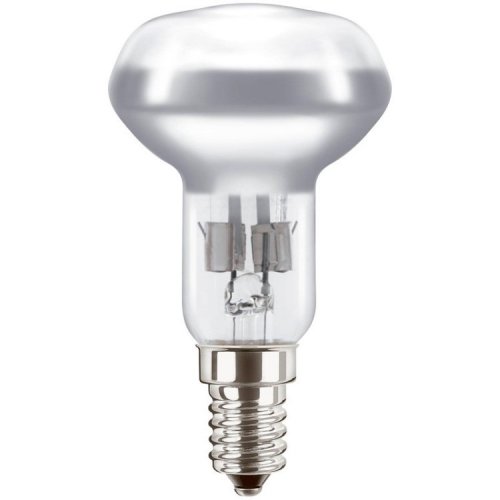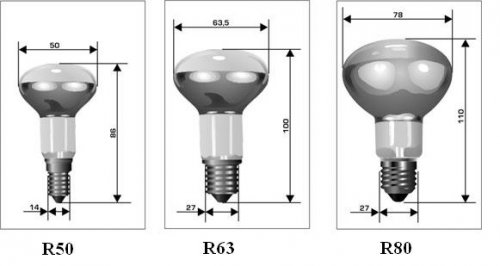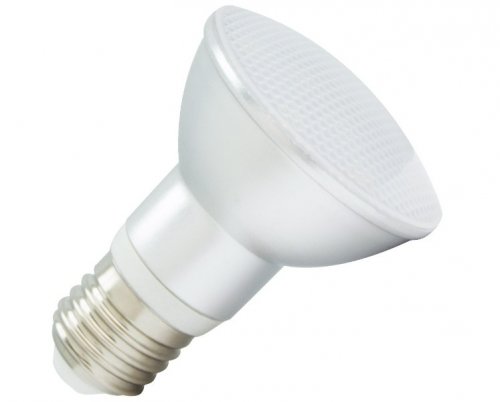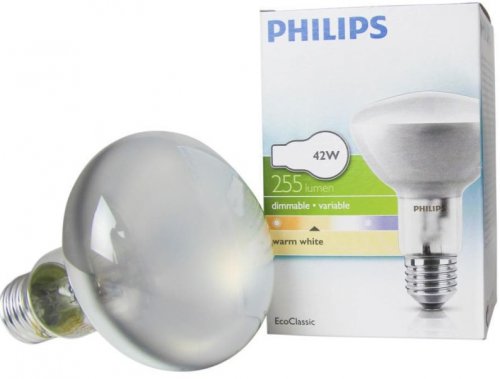Incandescent mirror lamps and their use
Incandescent mirror lamps (lamps-lamps) are designed to illuminate rooms with large distances, to illuminate shop windows and advertisements, are used for photography and filming and for other purposes.
The spatial distribution of the light flux of the lamp is determined by the shape of the bulb, on the inner surface of which a mirror coating is applied. Incandescent mirror lamps are manufactured with concentrated (ZK), broad (ZS) and cosine (ZD) light distribution curves.
A mirror or reflective filament lamp is distinguished from other lamps by the special shape of the bulb, as well as by the presence of a reflective mirror coating on part of its surface, which is a thin film of aluminum thermally spread on glass.
This coating is applied to the lamp bulb to redistribute its luminous flux in the space to be used more purposefully in a certain solid angle, so that you can clearly illuminate a certain place, get a more localized lighting than it is possible with a conventional lamp, and without the need to use an additional reflector (reflector).
To achieve this effect with a conventional lamp, an additional, often cumbersome, reflector would be required, which must somehow be installed behind.
Lamps of this type (reflector lamps) are traditionally installed in lighting fixtures with directional lighting, used for local lighting of shop windows, in order to create lighting of local areas in residential buildings and offices, to illuminate design paintings and artistic compositions in advertising and at exhibitions, — in general, where it is necessary to emphasize the lighting, to emphasize some local area.
Reflector lamps are colored and transparent, opaque, as well as infrared and ultraviolet. They are available from all leading lamp manufacturers.
The range of rated powers of such lamps does not differ much from the range of powers of ordinary incandescent lamps, although a clear difference is noticeable to the naked eye in the shape of the bulbs of mirror lamps. The bulbs here are not smooth pear-shaped like regular bulbs, but more flattened because the back of the bulb is essentially a reflector and the front is a diffuser.
As for the dimensions, the sockets here are standard aluminum E14 and E27 — for powers 25, 30, 40 and 60 W, and for lamps with power 75, 80 and 120 W — only caps of type E27 are characteristic.
As you can guess, the number in the marking of the base is its diameter in millimeters. The diameter of the bulb in millimeters is marked as R39, R50, R63, R80, PAR38. Different bulbs are found in lamps of different wattages. Bulbs with a diameter of 122 mm are typical for 80 and 120 W mirror lamps.
Today, when LEDs completely conquered the field of lighting, it is not surprising that LED analogues of reflector lamps appeared on the market. LEDs create light flux in a fundamentally different way than an incandescent filament, so they are simply mounted on a flat printed circuit board, and the board is simply covered with frosted glass. The result is a similar floodlight effect to a mirror lamp, although the energy consumption is 10 times lower than that of traditional mirror lamps.
Everything that applies to the standard sizes of incandescent reflective lamps — applies to LED "reflective" lamps: the sizes of their bulbs are R39, R50, R63. The service life of LEDs is many times longer than an incandescent, as is 20 or more years old.
High-quality LED "reflector" lamps have their own built-in stabilized voltage converter, which is why these lamps are not as sensitive to supply voltage drops as incandescent lamps, while the light output is in the region of 80 lm / W.
Such lamps are used more widely than incandescent lamps: they are, of course, used for traditional purposes - for local illumination of shop windows, paintings, plants, etc., but also due to their economy they are very suitable for lighting in small rooms where, thanks to the directed light, they contribute to greater visual comfort for people.
Mirror lamps are a highly efficient source of infrared radiation and are used for heating young animals, in the technological processes of drying products, varnishes, paints and other purposes.
See also: Disadvantages of incandescent lamps as light sources




